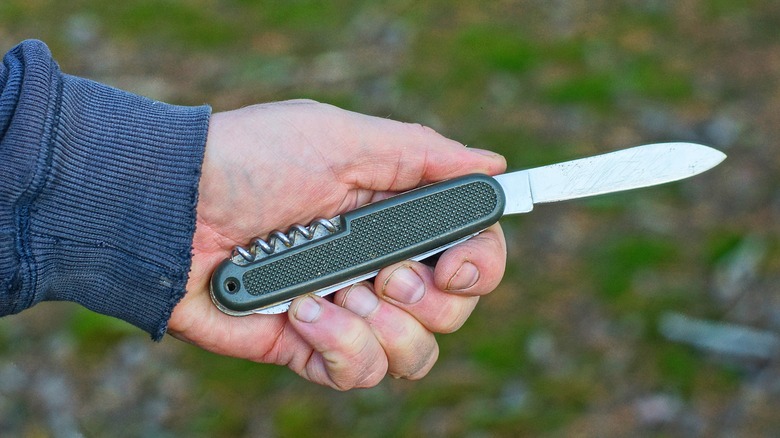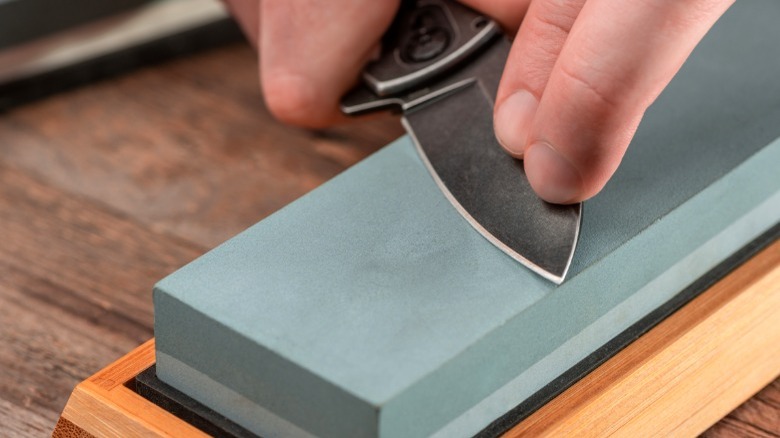The Key To Sharpening A Multi-Tool Pocketknife Is Using A Whetstone
A multi-tool is the ultimate "everyday carry" accessory to keep you prepared whenever and wherever you encounter a quick project. The pocketknife portion often finds the most use, handling everything from cutting cardboard boxes to removing splinters, but it's no good if you don't keep it sharp. A dull knife costs more time and effort only to deliver inferior results, all while leaving you open to an accidental injury.
While you can find several handy materials to restore a blade at a moment's notice (even a piece of aluminum foil can sharpen a knife!), one of the best tools to maximize sharpness and cutting efficiency is a whetstone. Also called a sharpening stone, a whetstone consists of natural or synthetic materials that come in numerous grits to restore heavily damaged knives or fine-tune a blade's razor-sharp edge. To maintain a pocket knife, you'll typically use a medium to fine-grit stone that will keep it as sharp as possible and won't wear the blade down too quickly. While many places suggest using a sharpening stone to refresh your pocket knife once or twice a month, it's better to sharpen oft-used knives, like utility knives and pocket knives, whenever they become dull.
How to sharpen a knife with a stone
If you have a combination sharpener, determine which side of your whetstone has a fine grit. A coarser grit will only be necessary if your blade needs significant grinding. Apply a small amount of water or oil over the stone as needed. The lubrication will help remove shaved particles ("swarf") and let the blade glide smoothly across the stone.
Place the pocketknife's blade against the stone at an angle of roughly 20 to 30 degrees for a sharp yet durable edge. Apply delicate pressure to the blade, and run the knife along the length of the stone. Make smooth passes from the knife's heel to the tip. You can push the blade against the stone in a slicing motion as you sharpen, drag it in the opposite direction, or run it back and forth. The critical point is to keep a consistent angle as you work.
Sharpen one side of the knife until it develops a burr (a thin tag on the edge). You can check for a burr by running your finger from the knife's spine to its edge on the side opposite the one you sharpened. Your finger should catch slightly on the burr. Next, sharpen the side with the burr until the other side develops it. Sharpen both sides this way a few more times until the burr wears down and you have a sharp blade. Rinse your knife before putting it back in your pocket, and you're all set for whatever life throws at you next.

